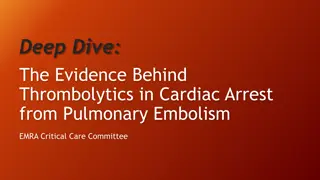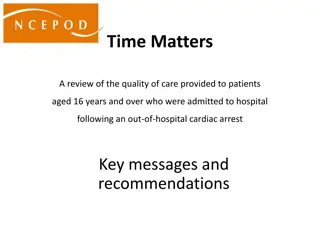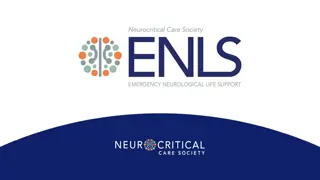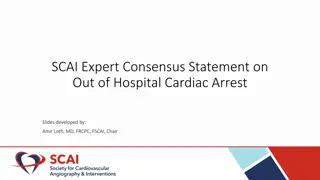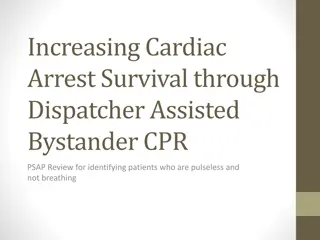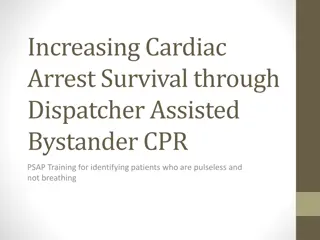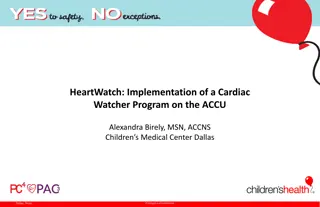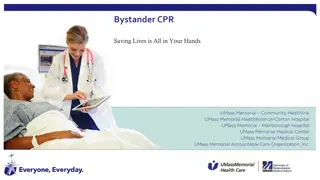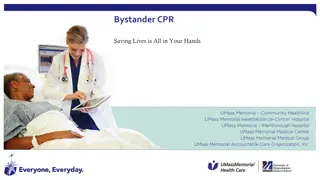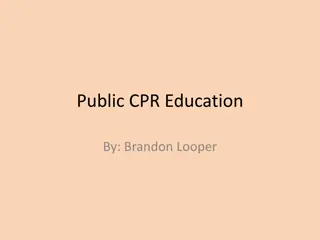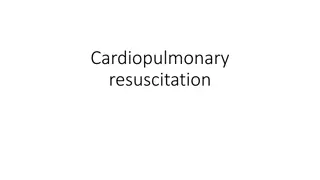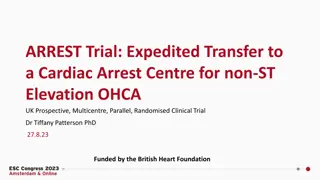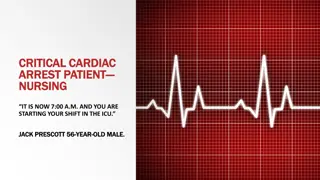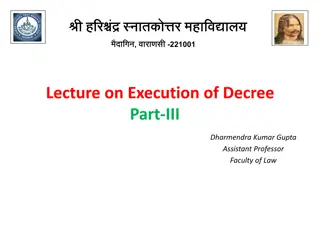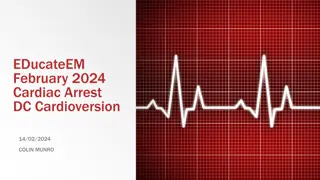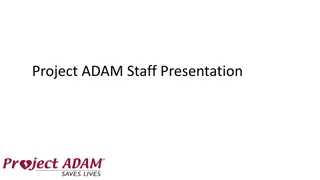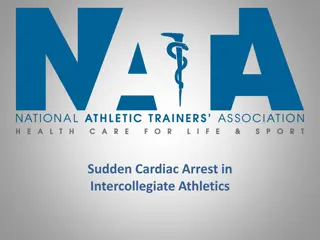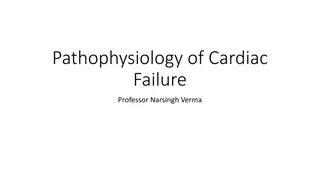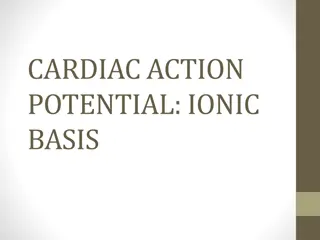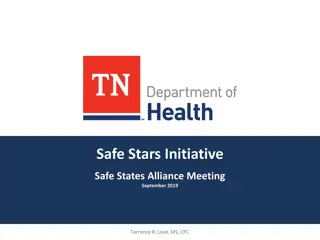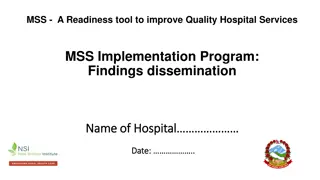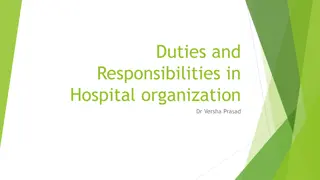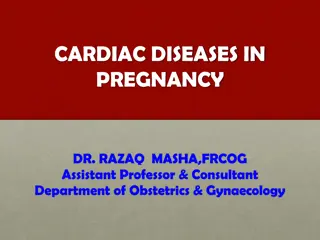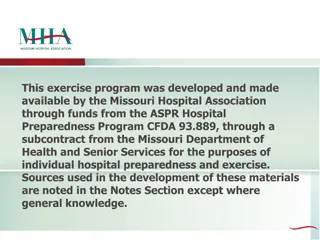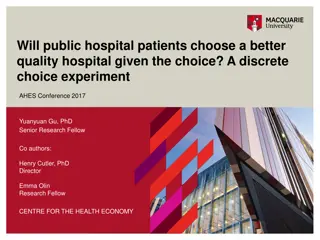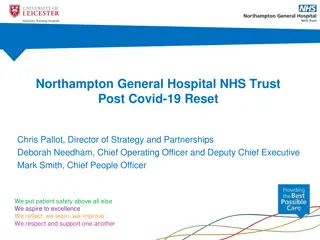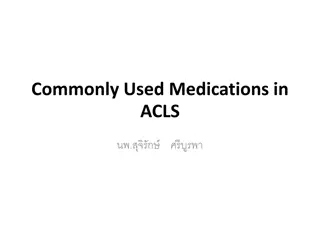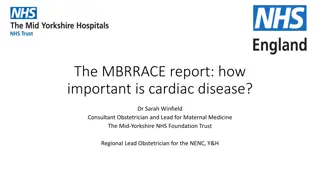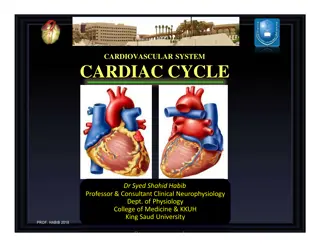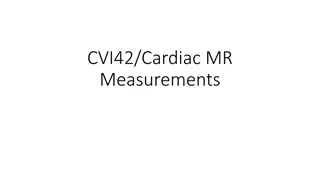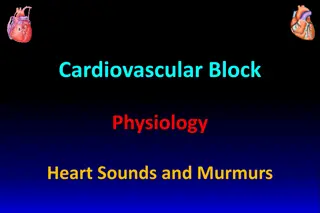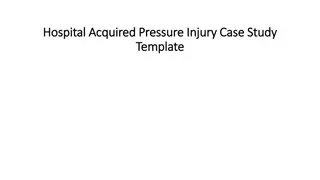Management Recommendations for Out-of-Hospital Cardiac Arrest Patients
Out-of-hospital cardiac arrest (OHCA) is a critical public health issue with high mortality rates. This consensus document by Dr. Amir Lotfi provides evidence-based recommendations for managing OHCA patients, particularly focusing on those with shockable rhythms and return of spontaneous circulation. The document highlights challenges in reporting mortality and morbidity data, underscores geographic survival variations, and discusses the causes of death in OHCA patients. It emphasizes the importance of standardized reporting systems and long-term neurological outcomes assessment.
Download Presentation

Please find below an Image/Link to download the presentation.
The content on the website is provided AS IS for your information and personal use only. It may not be sold, licensed, or shared on other websites without obtaining consent from the author. Download presentation by click this link. If you encounter any issues during the download, it is possible that the publisher has removed the file from their server.
E N D
Presentation Transcript
Out of Hospital Cardiac Arrest: The SCAI 2020 Consensus Document Amir Lotfi, M.D. FRCPC FSCAI Associate Chief, Cardiology Division Medical Director, Inpatient Heart & Vascular Medical Director, Baystate regional MI Program Associate Professor of Medicine, Tufts University School of Medicine May 15, 2020
Disclosures None
Out of Hospital Cardiac Arrest Out of hospital cardiac arrest (OHCA)remains a significant public health problem with high mortality and morbidity Interventional cardiologists are often consulted on OHCA patients with shockable rhythm and return of spontaneous circulation (ROSC) The purpose of this document is to provide an evidence-based and patient- oriented recommendation for the management of these patients
Background Annual incidence of emergency medical services (EMS)-assessed OHCA 347,322 Location home or residence in 69.5%; Nursing home 11.7% Witnessed by layperson 37% Survival to discharge 10.4% with good functional status 8.4% Shockable by an automated external defibrillators 18.7% Benjamin EM, et al. Heart Disease and Stroke Statistics 2019 Update. A Report from the American Heart Association. Circulation. 2019;139:00 CARES registry 2017
Challenges The true degree of mortality and morbidity from OHCA is unknown due to the lack of mandatory reporting, unified national surveillance systems, difficulty in accounting for cases not attended by EMS, lack of standard reporting systems, and scarcity of data regarding long term neurological and functional outcomes
There is significant variation in OHCA survival across counties due to bystander response variation of survival depending on EMS agencies race and income current public reporting systems Circ Cardiovasc Interv 2019 Apr;12(4):e007564 JAHA. 2020;9:e014178 JAMA Cardiol. 2018 Oct 1;3(10):989-999. Circulation. 2016;133:2159 2168
Etiology of Death The rate of survival to discharge with good neurologic function among OHCA patients is low with wide geographical variation estimated at 0.8 20%. The cause of death in two-thirds of patients with OHCA is due to anoxic brain injury and another one-third is due to a refractory post arrest shock and multi-organ failure Anoxic brain injury and post-cardiac arrest shock share common risk factors Laver S, Farrow C, Turner D, Nolan J. Mode of death after admission to an intensive care unit following cardiac arrest. Intensive Care Med 2004;30:2126-8. Girotra S, van Diepen S, Nallamothu BK et al. Regional Variation in Out-of-Hospital Cardiac Arrest Survival in the United States. Circulation 2016;133:2159-68. Lemiale V, Dumas F, Mongardon N et al. Intensive care unit mortality after cardiac arrest: the relative contribution of shock and brain injury in a large cohort. Intensive Care Med 2013;39:1972-80.
There is no single factor at the time of presentation to reliably prognosticate subsequent neurological outcome There are risk scores to assist decision making in a time sensitive situation Geocadin RG, Callaway CW, Fink EL et al. Standards for Studies of Neurological Prognostication in Comatose Survivors of Cardiac Arrest: A Scientific Statement From the American Heart Association. Circulation 2019;140:e517-e542 Bougouin W, Dumas F, Karam N et al. Should We Perform an Immediate Coronary Angiogram in All Patients After Cardiac Arrest?: Insights From a Large French Registry. JACC Cardiovasc Interv 2018;11:249-256. Bascom KE, Dziodzio J, Vasaiwala S et al. Derivation and Validation of the CREST Model for Very Early Prediction of Circulatory Etiology Death in Patients Without ST-Segment-Elevation Myocardial Infarction After Cardiac Arrest. Circulation 2018;137:273-282. Kiehl EL, Parker AM, Matar RM et al. C-GRApH: A Validated Scoring System for Early Stratification of Neurologic Outcome After Out-of-Hospital Cardiac Arrest Treated With Targeted Temperature Management. J Am Heart Assoc 2017;6. .
Situational Awareness We advocate using the concept of situational awareness Confirming prehospital and hospital clinical history and data Patient's comorbidities Goals of care goal with family Patient's wishes if known
Terminology We advocate using the following terms Definite strategy - activation of the cardiac Cath Lab (CCL)on initial encounter Defer strategy: No activation of the CCL on initial encounter. Transfer to the intensive care unit for targeted temperature management, post resuscitative care, clinical reassessment, and neurological recovery
Terminology Viewing the CCL as more a than location to perform angiography and percutaneous coronary intervention (PCI) but a location where coronary anatomy can be defined, cardiac hemodynamics can be measured, and assessment for mechanical circulatory support, if required
Public Reporting SCAI advocates making OHCA exclusion based on exceptional risk from public reporting analysis of PCI outcomes. The principle to be followed is that Public reporting of outcomes in high-risk patients, if done at all, should accurately reflect the performance of those operators and institutions. Additionally, SCAI recommends continuing to track process measures and outcomes in all patients suffering OHCA, including early access to coronary angiography and use of PCI.
Proposed Levels Of Care Based on SCAI Cardiogenic Shock Classification Schema for Patients with Cardiac Arrest and Shock
Consensus Statement on Out of Hospital Cardiac Arrest Recommendations Situational Awareness in Patients with OHCA In all comatose OHCA patients, we recommend dynamic clinical decision making of definite or defer transport to CCL based on situational awareness and assessment involving all clinical factors along the entire continuum of care. OHCA Patients with Non Shockable Rhythms In OHCA patients with initial non shockable rhythm, we recommended deferring transport to CCL at initial encounter OHCA Patients with Shockable Rhythm and STEMI on Post ROSC ECG OHCA Patients with Shockable Rhythm without STEMI on Post ROSC ECG Access for Intervention In selected comatose OHCA patients with ROSC exhibiting STEMI on ECG we recommend a definite invasive strategy. We recommend deferring invasive strategy at initial encounter in hemodynamically stable, comatose OHCA patients without STEMI on post ROSC ECG. In OHCA patients undergoing PCI, we recommend choosing the access site as per the operator s expertise and local standard catheterization lab protocols. For both routine femoral access and large bore access in case of hemodynamic support in patients with concomitant shock, we recommend the safe access site practices to reduce the risk of bleeding. Antiplatelet therapy We recommend ticagrelor or prasugrel as the preferred P2Y12 inhibitor in OHCA patients undergoing PCI. Anticoagulation therapy Among OHCA undergoing PCI we recommend the use of unfractionated heparin with monitoring as the peri-procedural anticoagulant given the availability of a reversal agent in cases of life threatening bleeding and reduced risk of acute stent thrombosis compared to bivalirudin. Target temperature management (TTM) We recommend against the use of prehospital TTM using cold intravenous crystalloids. We recommend initiating TTM inpatient as soon as possible. SCAI advocates making OHCA exclusion based on exceptional risk from public reporting analysis of PCI outcomes. The principle to be followed is that Public reporting of outcomes in high-risk patients, if done at all, should accurately reflect the performance of those operators and institutions. Additionally, SCAI recommends continuing to track process measures and outcomes in all patients suffering OHCA, including early access to coronary angiography and use of PCI. Barriers and Public Reporting
Conclusion Out of hospital cardiac arrest has a very high mortality and morbidity it is imperative to improve the chain of survival through: Public education Standard definition, national registry, separate category for public reporting, outcomes data Pre hospital care- by stander cardiopulmonary resuscitation, EMS standardization Acute in hospital assessment for risk stratification, TTM, reassessment Discharge care
Thank you Lloyd W. Klein, MD, MSCAI (Co- chair) Ravi S. Hira, MD, FSCAI Jaya Mallidi, MD, MHS FSCAI Roxana Mehran, MD, MSCAI John C. Messenger, MD, FSCAI Duane S. Pinto, MD, MPH, FSCAI Michael R. Mooney, MD, FSCAI Tanveer Rab, MD, FSCAI Demetri Yannopoulos, MD, FSCAI Sean van Diepen, MD, MSc


